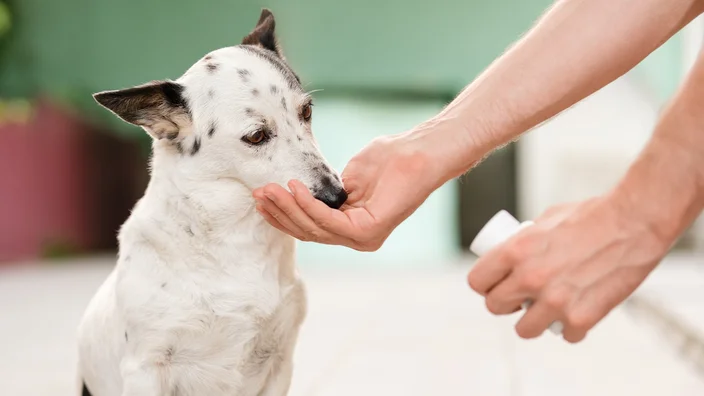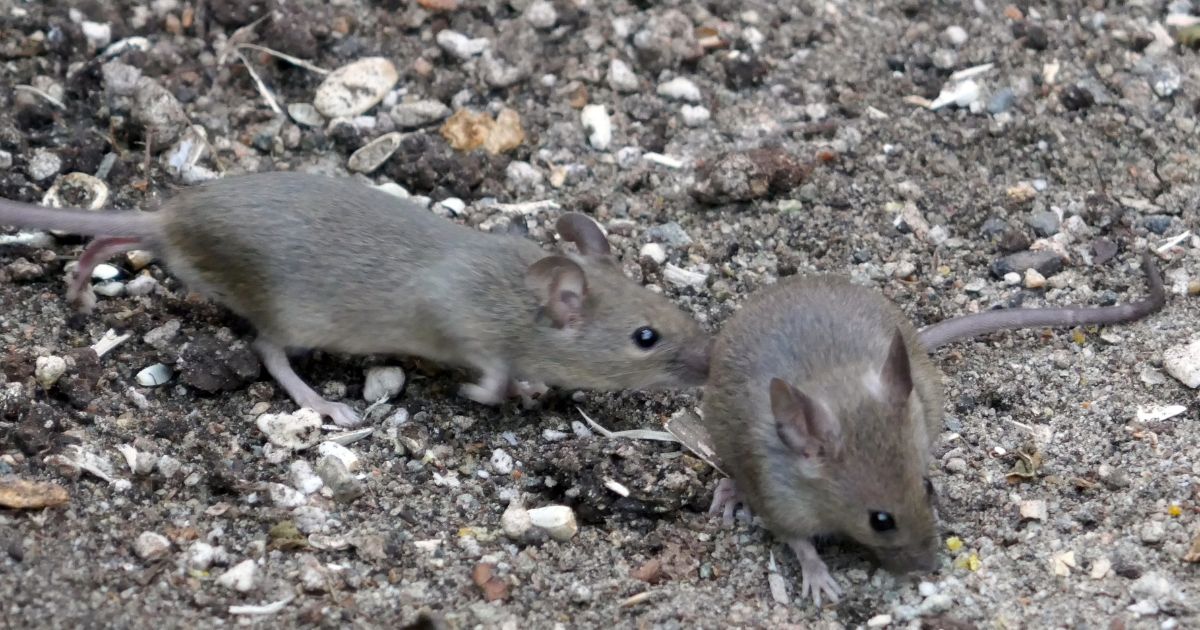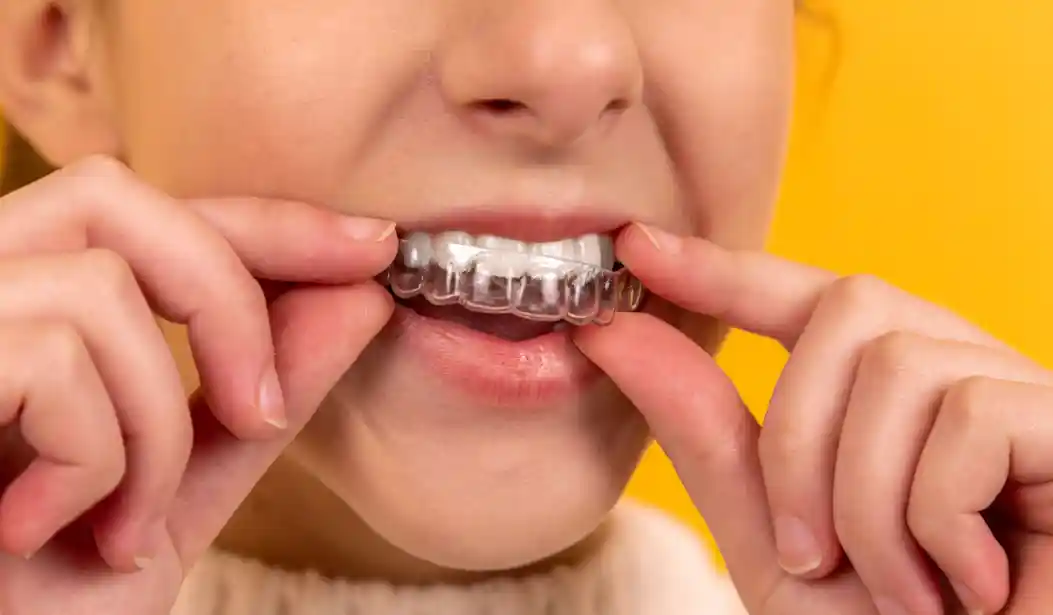Animal
The Benefits of Using a Dog Harness Over a Collar

Introduction: When it comes to walking your furry friend, choosing between a dog harness and a collar is a decision that every pet owner faces. While collars have been the traditional choice for many years, dog harnesses are becoming increasingly popular due to their numerous benefits. In this article, we’ll explore the advantages of using a dog harness over a collar and why it might be the best option for your canine companion.
- Reduced Strain on the Neck: One of the most significant benefits of using a dog harness is that it reduces strain on your dog’s neck. Unlike collars, which exert pressure on the neck and throat when pulled, harnesses distribute the force more evenly across the chest and shoulders. This is especially important for dogs that tend to pull on the leash, as it helps prevent injuries such as tracheal damage or collapsed trachea. By using a harness, you can provide your dog with a more comfortable and safer walking experience.
- Better Control and Management: Harnesses offer pet owners better control and management of their dogs, particularly for larger or more energetic breeds. With a harness, you have more leverage and control over your dog’s movements, making it easier to guide them and prevent pulling or lunging. This is especially beneficial for training purposes, as it allows you to teach your dog proper leash manners and reinforce positive walking behaviors. Additionally, harnesses provide added security and stability, making them ideal for dogs that are prone to escape or slipping out of their collars.
- Prevention of Respiratory Issues: Collars can put pressure on a dog’s neck and windpipe, especially when they pull on the leash or lunge forward. Over time, this pressure can lead to respiratory issues such as coughing, wheezing, or difficulty breathing. Harnesses alleviate this pressure by distributing it more evenly across the chest and shoulders, reducing the risk of respiratory problems. This is particularly important for breeds with brachycephalic (short-nosed) features, such as Bulldogs or Pugs, who are more susceptible to breathing difficulties.
- Protection for Small Breeds and Puppies: Small breeds and puppies are more delicate and vulnerable to injury, making harnesses a safer option for walking and training. Collars can be too harsh for small dogs, putting them at risk of neck injuries or tracheal damage. Harnesses provide a gentler and more secure alternative, allowing you to control your dog without putting undue stress on their neck or throat. Additionally, harnesses offer added security for puppies who are still learning to walk on a leash, preventing them from slipping out of their collars or getting tangled.
- Versatility and Functionality: Dog harnesses come in a variety of styles and designs to suit different breeds, sizes, and walking preferences. From back-clip harnesses for leisurely walks to front-clip harnesses for training and no-pull harnesses for strong pullers, there’s a harness for every need and situation. Some harnesses even feature additional features such as reflective strips for enhanced visibility, padding for comfort, or handles for added control. With so many options available, you can find the perfect harness to meet your dog’s specific needs and lifestyle.
- Reduced Risk of Escaping: Dogs are notorious for their Houdini-like escape skills, often slipping out of collars or harnesses during walks or outdoor adventures. Harnesses provide a more secure and snug fit, reducing the risk of escaping or slipping out. Additionally, many harnesses feature multiple points of adjustment and secure closures to ensure a tight and comfortable fit. This gives pet owners peace of mind knowing that their furry friend is safely secured and unable to escape during walks or outings.
- Comfort and Safety for Senior Dogs: Senior dogs, like puppies, require extra care and consideration when it comes to walking and mobility. Collars can be uncomfortable and restrictive for older dogs, especially those with arthritis, joint pain, or mobility issues. Harnesses offer a more comfortable and supportive alternative, allowing senior dogs to move more freely without putting strain on their neck or spine. Additionally, harnesses provide added stability and assistance for senior dogs who may need help navigating stairs, slopes, or uneven terrain.
- Training and Rehabilitation: Harnesses are valuable tools for training and rehabilitation purposes, allowing pet owners to guide and control their dogs more effectively. Front-clip harnesses, in particular, are useful for training dogs to walk politely on the leash by discouraging pulling behavior. Additionally, harnesses can be used to assist dogs with mobility issues or injuries, providing support and stability during walks or physical therapy exercises. With the right harness and training regimen, pet owners can help their dogs develop good leash manners and overcome behavioral or physical challenges.
Conclusion: Choosing a dog harness over a collar offers numerous benefits for both pet owners and their canine companions. From reduced strain on the neck and better control to prevention of respiratory issues and enhanced comfort, harnesses provide a safer, more comfortable, and more versatile option for walking and training dogs of all breeds and sizes. By selecting the right harness for your dog’s specific needs and lifestyle, you can ensure a positive and enjoyable walking experience for both you and your furry friend.

Animal
Yellow butterfly meaning: The Joyful Symbol of Spiritual Awakening

The All inclusive Imagery of Butterflies
Before jumping into the particular meaning of the yellow butterfly, it’s critical to get it the common imagery of butterflies over societies and otherworldly hones. In numerous conventions, butterflies are seen as images of change. This thought stems from their life cycle, beginning as eggs, advancing into caterpillars, and in the long run rising as wonderful butterflies. This transformation speaks to the soul’s travel through life, from its natural impediments to its higher potential and enlightenment. Butterflies moreover symbolize opportunity and gentility, as they are animals of the discuss, able to coast easily through the world. This flight is frequently translated as the soul’s freedom from the physical body, moving toward a higher state of being or awareness. Their fragile and transitory nature moreover reminds us of the impermanence of life and the significance of cherishing each moment.yellow butterfly meaning in Otherworldly Awakening
The color yellow has its claim wealthy otherworldly centrality, and when combined with the butterfly’s imagery, it makes a capable message almost otherworldly arousing and development. Yellow is frequently related with the sun powered plexus chakra, found in the range of the stomach. This chakra oversees individual control, certainty, and the capacity to show one’s wants. It is the vitality center capable for our internal light, and it’s frequently connected to positive thinking, bliss, and creativity. When a yellow butterfly shows up in your life, it can be a sign that you are entering or encountering a period of otherworldly arousing. It serves as a update to grasp your individual control, to believe your instinct, and to permit yourself to sparkle brightly in the world. The yellow butterfly empowers you to grasp the changes you are going through and to believe that these changes are driving you toward more prominent otherworldly knowledge and fulfillment. In numerous otherworldly conventions, butterflies are seen as couriers from the soul world, regularly showing up when the soul is prepared for a unused chapter. The yellow butterfly, in specific, can show that you are on the cusp of a otherworldly breakthrough, a minute when you will encounter more prominent clarity, knowledge, or illumination. It may encourage you to let go of ancient designs, convictions, and fears that no longer serve you, making room for unused, more positive experiences.yellow butterfly meaning as a Image of Bliss and Positivity
In expansion to its affiliation with otherworldly arousing, the yellow butterfly too encapsulates delight, inspiration, and bliss. The shinning, cheerful color of yellow has long been connected to sentiments of warmth, good faith, and eagerness. This makes the yellow butterfly an perfect image for those who are looking for to welcome more bliss into their lives. In times of haziness or lose hope, a yellow butterfly can show up as a sign of trust, reminding you that indeed after the most challenging seasons of life, there is continuously the plausibility for reestablishment and delight. Fair as the butterfly rises from the cocoon, shedding its ancient frame and flying unreservedly into the world, the yellow butterfly means that you as well can break free from confinements and grasp a unused way of being that is full of inspiration and light. If you experience a yellow butterfly amid troublesome times, it may be a message that your bliss and inward peace are holding up to be rediscovered. The butterfly energizes you to see inside and reconnect with the things that bring you joy and fulfillment. It welcomes you to let go of negative feelings and grasp a lighter, more carefree state of mind toward life.The yellow butterfly meaning in Distinctive Cultures
The meaning of the yellow butterfly changes over diverse societies and otherworldly hones. In numerous Local American conventions, butterflies are seen as images of alter and change, much like the caterpillar’s transformation into a butterfly. The yellow butterfly, particularly, is frequently related with the sun and its life-giving vitality. In this setting, the yellow butterfly is accepted to bring messages of recharging and trust, empowering people to grasp their individual control and make positive changes in their lives. In Chinese culture, butterflies are images of cherish and delight. They are regularly delineated in craftsmanship and writing as images of excellence and joy. The yellow butterfly, with its brilliant color, is moreover seen as a representation of great luckiness and fortune. In a few Chinese conventions, experiencing a yellow butterfly is accepted to proclaim the entry of a positive alter or a unused opportunity, particularly in things of the heart and relationships. In European legends, butterflies, in common, are frequently connected to the souls of the expired. The yellow butterfly, in any case, carries a more positive intention, meaning a message of peace and joy from the soul world. It is seen as a sign that the spirits of adored ones are observing over you, bringing favors and encouragement. In African otherworldly conventions, butterflies are accepted to be otherworldly couriers that direct people through life’s challenges. The yellow butterfly, with its dynamic color, is frequently seen as a image of bliss and divine security, empowering people to remain positive and believe in the travel ahead.The Yellow Butterfly as a Individual Guide
For those who are experiencing individual change, the yellow butterfly can act as a effective direct. Its appearance may flag that it is time to make a critical alter in your life, whether it be a move in point of view, a alter in way of life, or an passionate or otherworldly breakthrough. The yellow butterfly empowers you to grasp your claim inward light and take steps toward the fulfillment of your genuine purpose. If you are encountering a time of question or instability, the yellow butterfly can remind you that you have the control to make the life you crave. It may serve as a tender bump to believe your instinctual, tune in to your inward voice, and take after your heart. Like the butterfly, you have the capacity to break free from the imperatives of the past and spread your wings to investigate unused possibilities. Moreover, the yellow butterfly can symbolize a require for adjust in your life. Fair as the butterfly dances between blooms, it reminds you to discover agreement between your internal and external universes. The butterfly’s delicacy speaks to the significance of not getting to be impeded down by life’s challenges, but instep, drawing closer each day with a sense of ponder and curiosity.How to Interface with the Vitality of the Yellow Butterfly
If you feel a association to the vitality of the yellow butterfly, there are a few ways you can welcome its positive and transformative impact into your life.1. Meditation
Meditating on the picture of a yellow butterfly can offer assistance you interface with its typical meaning. Near your eyes and imagine the butterfly vacillating around you, its wings gleaming brightly with dynamic yellow vitality. Envision yourself changing along with the butterfly, shedding any ancient convictions or fears that no longer serve you. Permit the butterfly’s vitality to fill you with light, delight, and optimism.2. Journaling
Journaling is another capable way to interface with the yellow butterfly’s vitality. Take a few time each day to type in down your considerations, sentiments, and encounters. Reflect on ranges of your life where you may be prepared for alter or change. Utilize the yellow butterfly as a image of support, reminding yourself that you have the control to make positive shifts in your life.3. Encompass Yourself with Yellow
To welcome the vitality of the yellow butterfly into your physical environment, encompass yourself with the color yellow. This seem cruel wearing yellow clothing, setting yellow blossoms in your domestic, or enhancing your space with yellow things. The shinning, elevating vitality of the color will offer assistance you remain associated to the butterfly’s blissful and transformative influence.4. Pay Consideration to Butterfly Sightings
If you experience a yellow butterfly in nature or in your every day life, take it as a sign to stop and reflect. A yellow butterfly locating may demonstrate that you are on the right way toward individual development and otherworldly arousing. It may too be a update to grasp your delight and positive thinking, trusting that positive changes are on the horizon.Conclusion
The yellow butterfly meaning is a effective image of change, otherworldly arousing, delight, and inspiration. Whether it shows up in your life as a tender update of your internal light or as a sign of individual development and otherworldly knowledge, the yellow butterfly energizes you to grasp alter with an open heart and intellect. It welcomes you to believe in your possess capacity to take off to unused statures and to continuously carry with you the delight and good faith that comes with grasping life’s steady transformation. yellow butterfly meaning By understanding and grasping the imagery of the yellow butterfly, you can bring more light, adore, and bliss into your possess life, as well as the lives of those around you. Let the yellow butterfly be a direct as you explore your travel of self-discovery, otherworldly arousing, and individual change.Read More latest Posts
Animal
Top Ingredients Used in Anti-Inflammatory Products for Dog’s Pain

Full-Spectrum CBD Oil
Full-spectrum CBD oil has gained significant attention for its anti-inflammatory properties. When you use CBD for dogs pain reduction, less inflammation, better joint health, and allergy relief are often the results. It has natural analgesic properties that relieve pain without the harmful side effects of conventional medications. This ingredient also supports the immune system and aids in protecting the joints, making it a staple in anti-inflammatory treatments for pets.Turmeric
Turmeric, a vibrant yellow spice, is well known for its powerful anti-inflammatory and antioxidant properties. Its active compound, curcumin, helps combat pain caused by arthritis, digestive issues, and even cancer. Turmeric is often used in holistic treatments to reduce inflammation and improve mobility in dogs suffering from chronic pain. By boosting the body’s natural healing processes, turmeric aids in reducing swelling and stiffness, improving the overall quality of life for pets dealing with painful conditions.Frankincense
Another beneficial ingredient is frankincense, which is known for its immune-boosting properties. This helps reduce inflammation and is especially effective for dogs with arthritis and joint pain. Frankincense can also support healthy blood circulation and reduce the formation of tumors. For pets dealing with pain, frankincense offers a natural, soothing alternative that promotes healing and improves movement.Hemp Seed Oil
Hemp seed oil is a versatile ingredient that provides the ideal ratio of omega-3 and omega-6 fatty acids, which are essential for maintaining healthy skin and fur. Beyond skin health, these fatty acids support joint mobility and reduce inflammation. This oil moisturizes the skin without the side effects associated with fish oils, making it a gentle yet effective addition to anti-inflammatory products for dogs. Hemp seed oil also contributes to reducing shedding and promoting a glossy, healthy coat.MCT Oil
Medium-chain triglyceride (MCT) oil, derived from coconut oil, plays a supportive role in reducing inflammation. It helps enhance the body’s ability to process fat and boosts energy levels, which can be particularly beneficial for dogs dealing with weight management issues due to limited mobility. MCT oil can also support gut health, promote brain function, and help with healthy weight management, making it an all-around supportive ingredient for anti-inflammatory products.Benefits of Online Stores for Dog Care
Online stores have made it easier than ever to access high-quality anti-inflammatory products for dogs. With just a few clicks, pet owners can purchase products that help alleviate their pets’ pain and inflammation. These stores often provide detailed product information and customer reviews, allowing pet parents to make informed decisions. Choosing the right anti-inflammatory product for a dog’s pain can significantly improve their well-being and mobility. Ingredients from full-spectrum CBD oil to MCT oil are all natural. When using CBD for dogs, pain relief and inflammation reduction are often observed. As more pet owners turn to these products, understanding the benefits of these ingredients can help ensure that their pets live a pain-free, comfortable life.Read More Latest Posts
Animal
Signs of Mice in House: Identifying Infestations Early

Mice can be more than just an occasional nuisance; they can pose significant health risks and cause property damage. Recognizing the signs of mice in a house is crucial for addressing the issue before it escalates. Homeowners should be alert to various indicators, such as droppings, gnawed materials, or unusual sounds at night.
These small rodents are adept at hiding and can enter homes through tiny openings. Signs like scurrying noises, especially in walls or ceilings, may indicate that mice are present. Additionally, spotting nests made from shredded paper or fabric can confirm their presence.
Taking swift action upon identifying these signs can prevent a minor inconvenience from turning into a significant infestation. Regular inspections and knowledge of what to look for can help maintain a mouse-free environment and ensure the safety and comfort of a home. If you think you’ve got a mice invasion, your best bet is to hire a professional mice extermination company.
Identifying Signs of Mice in Your Home
Recognizing the signs of mice is essential for maintaining a safe and healthy living environment. Various indicators, ranging from physical evidence to auditory cues, can reveal their presence.
Physical Evidence of Mice
Physical evidence can include droppings, gnaw marks, and nesting materials. Mouse droppings are small, dark, and cylindrical, often found in areas they frequent. They are usually located near food sources or nesting sites.
Gnaw marks may appear on furniture, baseboards, or food packaging. Mice have strong teeth, leaving distinctive bite marks that can indicate their feeding habits. Additionally, shredded paper, fabric, or grass can signify nesting materials.
Look for oily smudge marks on surfaces. Mice often rub against walls and furniture, and these marks result from the natural oils in their fur. Monitoring these signs can help homeowners identify potential infestations early.
Sounds and Odors Indicating Mice Presence
Mice produce distinct sounds that can alert homeowners to their presence. They are nocturnal creatures and are most active at night. Scratching noises can often be heard from walls, ceilings, or floors as they travel or build nests.
Additionally, high-pitched squeaks may indicate communication between mice. Homeowners should pay attention to these auditory signals, especially when the house is quiet.
Odors can also serve as a warning sign. A musty or pungent, ammonia-like smell may suggest a mouse infestation. This odor often emanates from their droppings and urine. Recognizing these sounds and smells can assist in the early detection and prevention of more significant problems.
Methods to Detect Mice Activity
Detecting mouse activity involves careful observation and the use of specific tools to assess the presence of these pests. The following methods can help identify signs of mice in a home.
Visual Inspection Techniques
A thorough visual inspection is crucial for spotting signs of mice. Look for droppings, typically small and dark, often found in hidden areas like under sinks or corners.
Check for gnaw marks on food packaging, furniture, or walls. Mice leave these marks as they chew through materials to create nests or access food.
Additionally, observe any nesting materials such as shredded paper, fabric, or insulation in hidden spots. Observing unusual sounds, like scurrying or scratching, can also indicate mouse activity.
Inspect entry points. Mice can squeeze through small openings, so check around pipes, vents, and gaps in walls for signs of access.
Utilizing Detection Tools
Various detection tools can enhance the effectiveness of identifying mouse activity. Snap traps are a common tool; they can provide immediate evidence if mice are present.
Electronic traps are used, offering a humane and efficient method of capturing mice. These traps alert users with a signal when a mouse is caught.
Monitoring devices like infrared cameras or motion sensors can help capture movement in critical areas like kitchens and basements. These tools can provide visual confirmation of mice.
Sticky traps can also be helpful but may not be as reliable. For the best results, place them in areas where signs of activity have been noted.
Combining visual inspection with these detection tools increases the chances of accurately determining the presence of mice in a home.
Addressing Mice Infestations
To effectively tackle mice infestations, it is crucial to consider both professional extermination services and preventive measures. Understanding these approaches can significantly reduce the likelihood of ongoing problems.
Professional Extermination Services
Professional extermination services specialize in identifying and eliminating mice infestations. They typically begin with thoroughly inspecting the property to pinpoint entry points and nesting areas. Common indicators of mice include:
- Droppings: Small, dark pellets found near food sources.
- Nests: Shredded materials like paper or fabric.
- Noise: Scratching or scurrying sounds, especially at night.
Exterminators often use a combination of traps and baits to effectively target the infestation. They may also provide guidance on sealing entry points to prevent future occurrences. It is advisable to choose licensed professionals who follow safe pest control practices.
Preventive Measures and Maintenance
Preventive measures are essential in maintaining a mouse-free home. Regular maintenance can greatly reduce the chances of an infestation. Key strategies include:
- Sealing Entrances: Inspect the premises for gaps around pipes, walls, and doors. Seal openings with materials like steel wool or caulk.
- Proper Food Storage: Store food in airtight containers to avoid attracting mice.
- Regular Cleaning: Maintain a clean environment by promptly cleaning up spills and crumbs.
Additionally, keeping clutter to a minimum limits nesting sites. Homeowners should routinely check for signs of mice to catch infestations early. Implementing these measures helps create an inhospitable environment for mice.
Critter Stop is the Dallas-Fort Worth Metroplex’s trusty mice extermination company. Contact them at (214) 234-2616 for tailored solutions. They are known for high-quality work and outstanding customer service to handle wildlife and pest removal effectively.
-

 Travel1 year ago
Travel1 year agoOnboardicafe.com Login Exploring the Delights of Onboardicafe
-

 Food & Recipes12 months ago
Food & Recipes12 months agoFive Food Products You Must Avoid Giving to Your Infant
-

 Sports1 year ago
Sports1 year agoThe Most Popular Sports In The World
-

 Health & Fitness10 months ago
Health & Fitness10 months agoSuboxone Tooth Decay Lawsuits and the Pursuit of Justice Against Indivior
-

 Sports9 months ago
Sports9 months agoSmart Solutions for Football Field Maintenance
-

 Entertainment1 year ago
Entertainment1 year agoNavigating the Web: The Ultimate List of Tamilrockers Proxy Alternatives
-

 Technology4 months ago
Technology4 months agoSustainable Practices in Video Production: Reducing the Carbon Footprint
-

 Sports9 months ago
Sports9 months agoWearable Tech and the Future of Football









